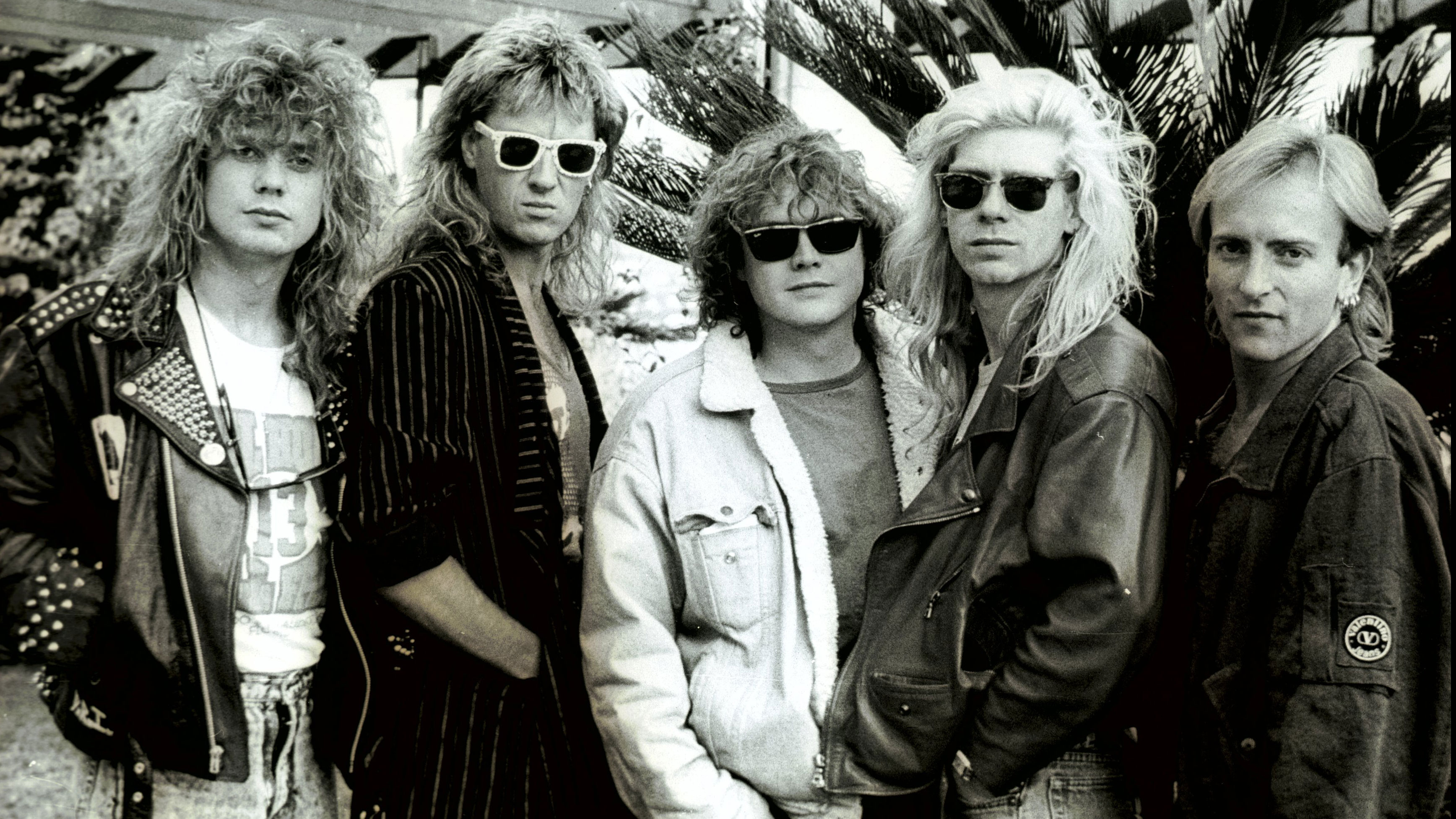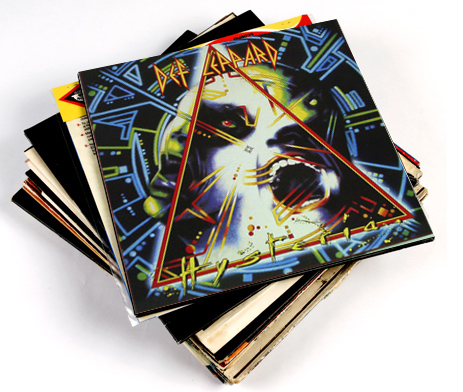Def Leppard's Hysteria, 30 years on: "I’m going to have to go back in a time machine"
Bassist Rick 'Sav' Savage talks track-by-track

On August 3, 1987, Def Leppard released their fourth studio album, Hysteria. It would see them become one of the biggest bands in the world, eclipsing all of their so-called New Wave Of British Heavy Metal peers and becoming a major player in popular culture – perhaps mostly because, in many ways, it was a pop record.

It would top the charts on both sides of the pond, carry no less than seven hit singles including radio anthem Pour Some Sugar On Me – which still to this day sound genuinely ground-breaking in both songcraft and sonics.
Now celebrating its 30th anniversary, the masterpiece is being reissued in multiple formats – including a Super Deluxe Editions with five CDs, two DVDs, four books, a photo book and more, as well as on limited edition coloured vinyl. Here Rick ‘Sav’ Savage talks us the story behind each of its 12 tracks…

1. Women
“I’m going to have to go back in a time machine for 30 years, even longer than that because we actually started making the record in 1984 as far as writing goes.
"Women was originally an idea that [producer] ‘Mutt’ Lange came up with, just a very standard three-minute song with very definite verses, choruses and a bridge.
There’s so much detail that went into every song
“Then when we started working on it, we wanted to extend it and make it a big epic sort of track. The guitar solo came after the song was written, that’s when we thought we’d want more of an album track feel with this long instrumental bit. Mutt’s original idea was almost more like a pop song…”
2. Rocket
“This started off with Joe [Elliott, vocals] hearing some African type of tom-tom song, it was more of a rhythm – it had no music to it. So he wanted to try and create that tribal rhythm ourselves and build a song on top of that. We wanted to do something out of the ordinary and avoid doing this bog-standard tune.
Get the MusicRadar Newsletter
Want all the hottest music and gear news, reviews, deals, features and more, direct to your inbox? Sign up here.
“At the time I remember thinking we should make a middle section that was a modern-day version of Whole Lotta Love, where it goes off on a tangent.
"That was the main inspiration… to take you on this journey through a drum loop with all sorts of different vocal and guitar ideas, as well as sound effects to create some space-age moods on top of that.”
3. Animal
“It’s a very strange song, in that we completely finished the demo in Dublin where we had been writing. The vocal line was all finished, same with the lyrics and by the time we got to recording it properly, it was a little bit to leaden.
"The guitar parts were a little too heavy for the nature of vocals that Joe had in mind, so we stripped it back – which we’d never really done before. Normally, we create the guitars first and put the melodies on top.
"So we had the finished song and decided to keep the melody but completely rewrite the backing track, which was really different for us!
“There isn’t part of the original song that stayed, except for a bit of the breakdown section. We wanted to make it more lightweight and pop-orientated because originally it sounded like a second-rate Van Halen riff that didn’t quite match up to the friendly, commercial-sounding vocals.”
4. Love Bites
“There’s so much detail that went into every song. With this album, we knew we were writing something that transcended anything that we’d done before. Everyone would write a ballad from time to time, and any of the ones we’d done, like Bringin’ On The Heartbreak, were specifically rock ballads.
“Although Love Bites falls into that category, I always felt it transcended that category as a standalone mainstream love song with meaning and weight to it. We knew it would appeal to a wide range of people but never be wimping out either! It had a hardcore message, but was still really melodic at the same time.”
5. Pour Some Sugar On Me
“It’s a strange one, this. You sometimes have to ask yourself, ‘Why did this song become so popular?’ It defied a lot of logic. I’ve got to be honest, it’s one of the songs I had the least amount of input in. In fact, I wasn’t even in the country!
"As far as I was concerned, the album was finished, recorded and ready for mixing. So I’d left – I had mentally checked out and was back at my home in Dublin.
They were like, ‘Dude you need to come back, we’ve written another song!’
“Then all of a sudden, Joe was finishing off some random vocals and came up with the rhythm and vibe of the verse. Mutt walked into the room and was like, ‘Stop what you’re doing – we need to make a song out of this!’ So my phone rang and they were like, ‘Dude you need to come back, we’ve written another song!’
“We reconvened back in the studio and finished the song in about four days. Which is interesting, considering the album took four or five years to make! It happened because Mutt heard something that the album didn’t have.
"When it was first released, it wasn’t a hit at all… this song was a slow-burner. It wasn't until the live version had aired on MTV a year later that it all took off and became the anthem we’re most known for.”
6. Armageddon It
“There are little things on this like, ‘C’mon Steve!’ that really capture people’s imaginations. When we sat down to write this, it was originally a chord sequence that I came up with, very basic and simplistic in the verse. And it developed into something more sleazy and swaggery, in the way that some of the great Rolling Stones songs came out – not that we were trying to copy them, but we just wanted a bit of that essence.
“Steve [Clark, guitars] had a separate idea for the chorus and we started filling it all out with massive four or five part harmonies. We just needed any old lyric to get the melody across - 'Gimme all your loving' was used just for the demoes to get it all worked out. We planned to change the lyrics because of the famous ZZ Top song, but we loved the sound of it so much and couldn’t come up with anything better so we stuck with it!”

Amit has been writing for titles like Total Guitar, MusicRadar and Guitar World for over a decade and counts Richie Kotzen, Guthrie Govan and Jeff Beck among his primary influences. He's interviewed everyone from Ozzy Osbourne and Lemmy to Slash and Jimmy Page, and once even traded solos with a member of Slayer on a track released internationally. As a session guitarist, he's played alongside members of Judas Priest and Uriah Heep in London ensemble Metalworks, as well as handling lead guitars for legends like Glen Matlock (Sex Pistols, The Faces) and Stu Hamm (Steve Vai, Joe Satriani, G3).
"Reggae is more freeform than the blues. But more important, reggae is for everyone": Bob Marley and the Wailers' Catch a Fire, track-by-track
“Part of a beautiful American tradition”: A music theory expert explains the country roots of Beyoncé’s Texas Hold ‘Em, and why it also owes a debt to the blues










